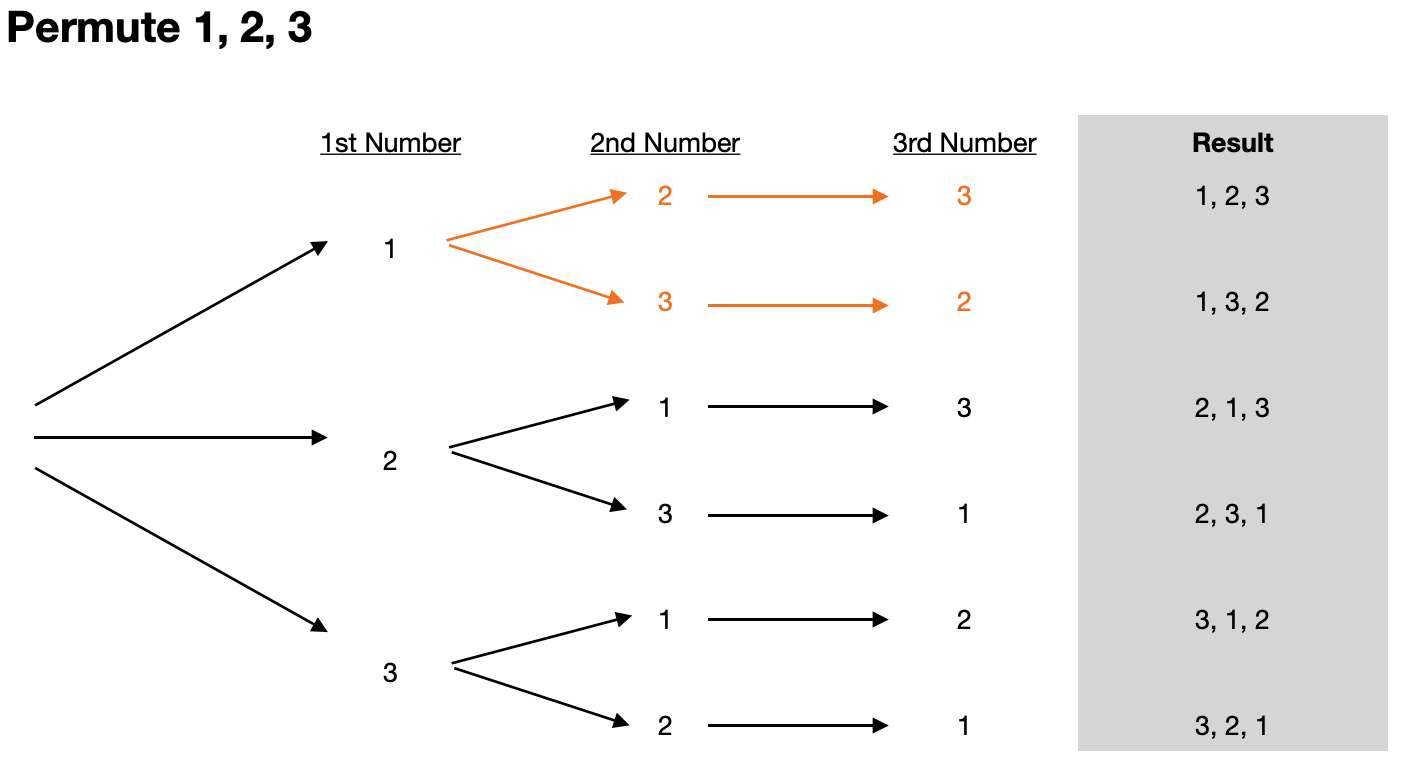

So 6 is next larger and 2345(least using numbers other than 6) Find lexicogrpahically least way to extend the new aĬonsider example array state of for sorted Īfter 56432(treat as number) ->nothing larger than 6432(using 6,4,3,2) beginning with 5.Increase a by smallest feasible amount.Find largest j such that a can be increased.There are n! permutations at most and hasNextPermutation(.) runs in O(n) time complexity 40 Answers Sorted by: 1 2 Next 741 Use itertools.permutations from the standard library: import itertools list (itertools.permutations ( 1, 2, 3)) Adapted from here is a demonstration of how itertools. This is the asymptotically optimal way O(n*n!) of generating permutations after initial sorting. It was enough when I needed it, but it's no itertools.permutations by a long shot. This method is non-recursive, but it is slightly slower on my computer and xrange raises an error when n! is too large to be converted to a C long integer (n=13 for me). NewPermutation.append(available.pop(index)) This way the numbers 0 through n!-1 correspond to all possible permutations in lexicographic order. You have n choices for the first item, n-1 for the second, and only one for the last, so you can use the digits of a number in the factorial number system as the indices. I used an algorithm based on the factorial number system- For a list of length n, you can assemble each permutation item by item, selecting from the items left at each stage. Indices, indices = indices, indicesĪnd another, based on itertools.product: def permutations(iterable, r=None):įor indices in product(range(n), repeat=r):

If len(elements) AB AC AD BA BC BD CA CB CD DA DB DC Python proporciona una herramienta estándar de biblioteca para generar permutaciones: siguiente ejemplo muestra cómo usar esto para generar todas las permutaciones de una lista.

Use itertools.permutations from the standard library: import itertoolsĪdapted from here is a demonstration of how itertools.permutations might be implemented: def permutations(elements):


 0 kommentar(er)
0 kommentar(er)
